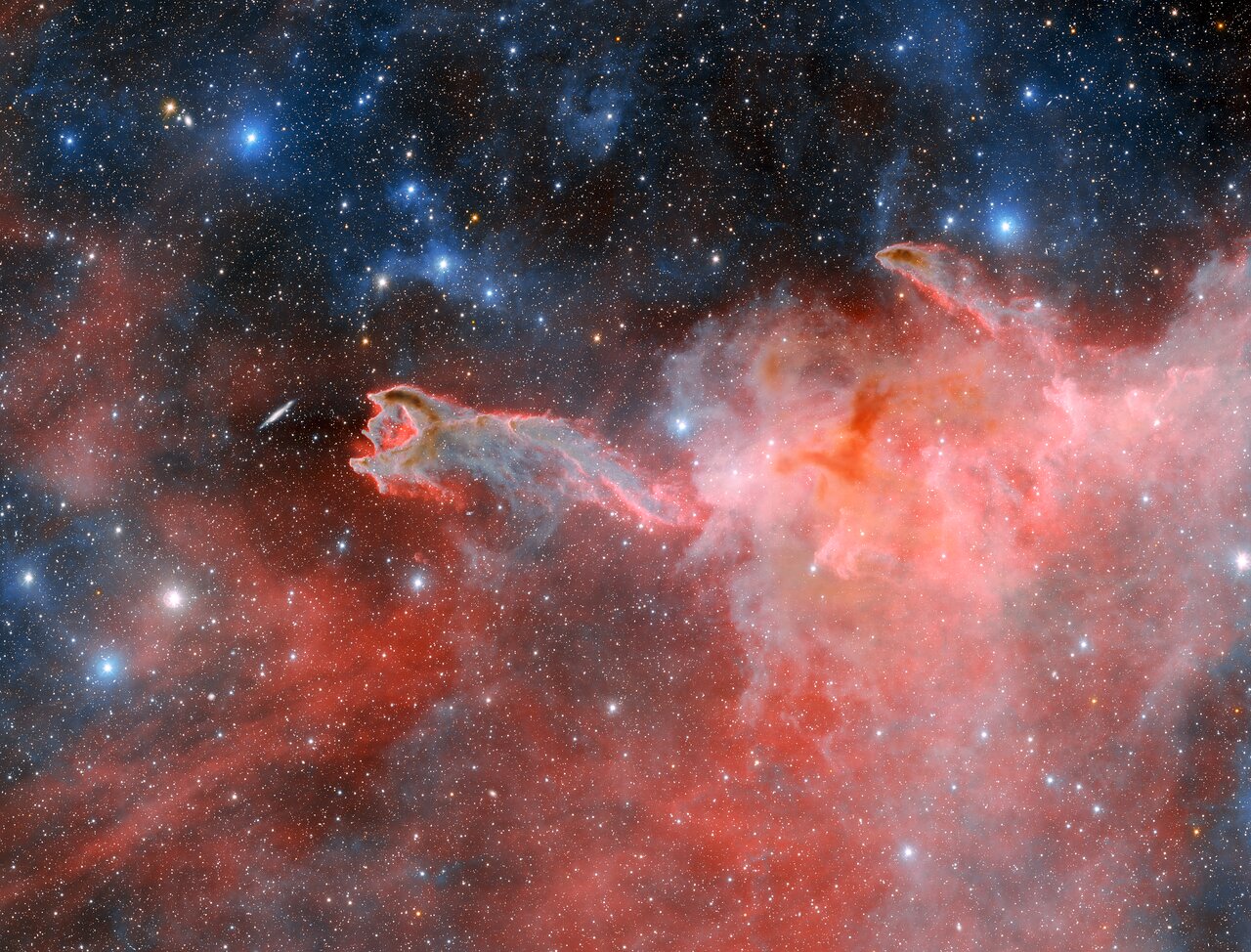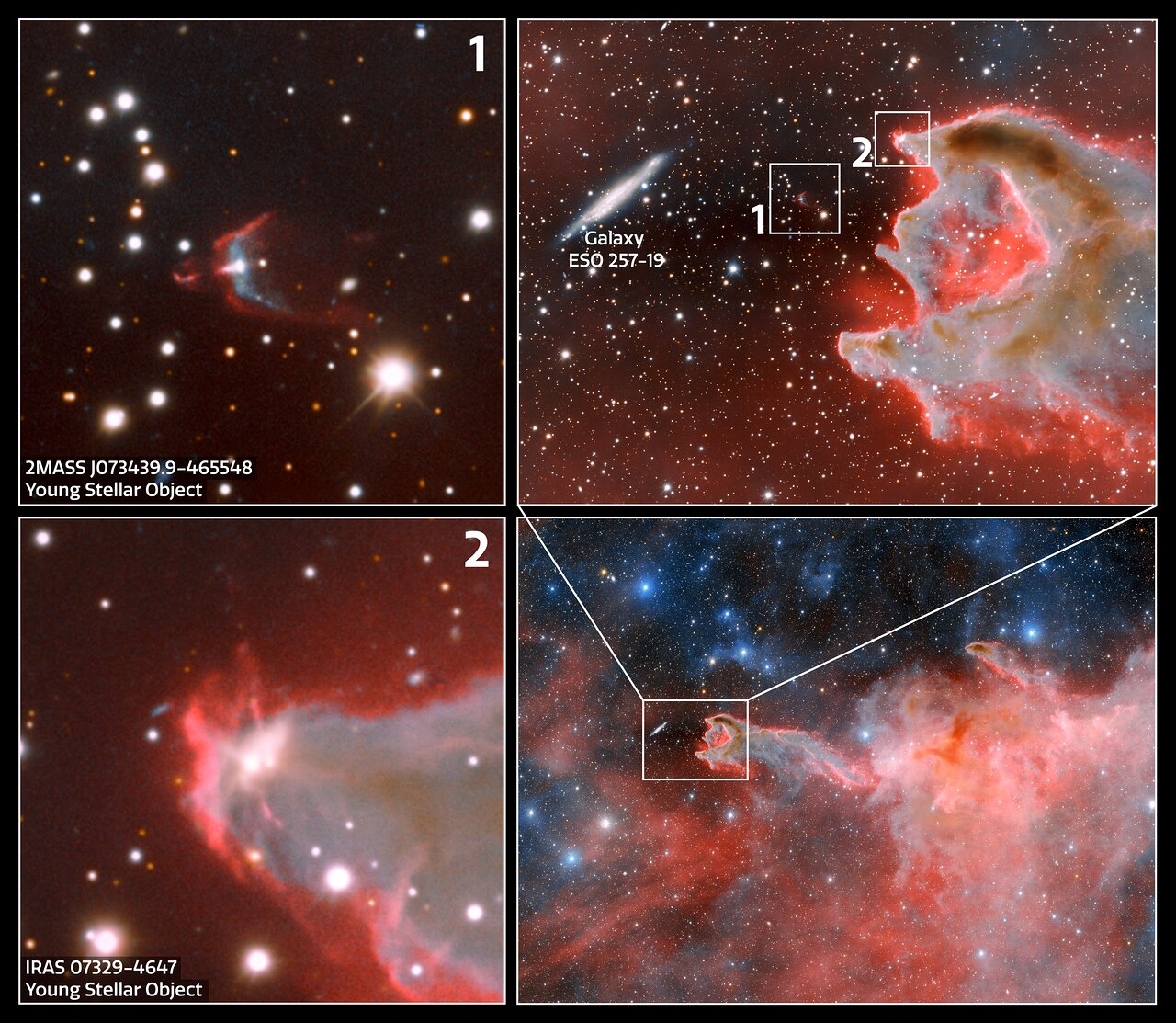The stunning photo taken by the Dark Energy Camera (DECam) shows the luminous structures of the Gum Nebula (Gum 10) illuminated by the hot massive stars that dot this cloud of dust and gas. The photo highlights the structure of the nebula with an unusual shape, similar to a hand stretched out into space. This structure, which was called God’s Hand, belongs to a type of objects called cometary globules. It is located at a distance of 1300 light-years from us in the constellation Puppis.

The Gum Nebula also attracts the attention of astronomers with its unusual comet-like shape, which is also called a comet globule. They tend to have a compact head with a long tail, like the comets from which they got their name. But while comets are made of rock and ice and have a tail due to the sublimation of ice when they approach a warm star, cometary globules get their tail due to a different process. They are also much bigger. In this case, the God’s Hand globule has a huge head that reaches 1.5 light-years across, and its tail is eight light-years long.

The mechanism by which these comet-like objects gain their distinct shape remains mysterious, but astronomers have put forward two main concepts regarding their origin. According to the first hypothesis, at first they could have been spherical nebulae, such as the well-known Ring Nebula, which were then changed by the explosion of a supernova nearby. Perhaps it was the initial explosion that formed the Gum Nebula. The second idea is that cometary globules are formed by a combination of stellar winds and radiation pressure from nearby hot massive stars.
Scientists are still figuring out what processes create cometary globules. But they noticed that there were a lot of them in this nebula. Researchers suggest that they may have formed at first as spherical nebulae. They were then destroyed by a supernova, which created the Gum Nebula. Or they could have been formed by winds and radiation from nearby hot stars.
Earlier, we reported on how James Webb sent an impressively detailed photo of the Horsehead Nebula.
According to noirlab.edu
Follow us on Twitter to get the most interesting space news in time
https://twitter.com/ust_magazine


